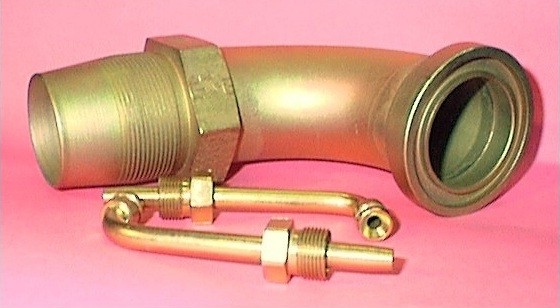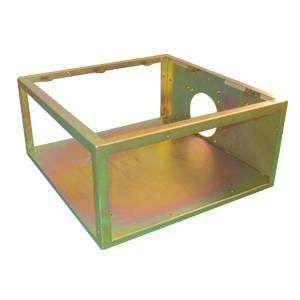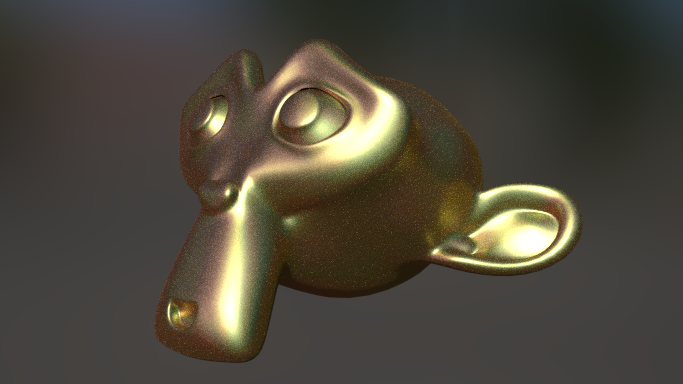anyone has seen a nice cadmium yellow ish texture material
procedural texture only
Got one but too greenish and no texture at all
thanks for any feedback
happy cl
anyone has seen a nice cadmium yellow ish texture material
procedural texture only
Got one but too greenish and no texture at all
thanks for any feedback
happy cl
Surely cadmium yelliw is just the colour. What you mix that with would dictate the material (e.g. Metal, paint, plastic, raw pigment powder…)
no more like protection layer on metal like these
which might be more then pure cadmium
it is not pure color
there is some texture and color difference
happy cl

Hmm - much of the look is dependent on the surface finish - but one aspect cad plating does appear to have is a kind of purple hue in places (and sometimes green too). Sometimes it’s smooth sometimes blotchy, and sometimes is in the middle of a plate but not the edges.
I knocked this up to recreate the ‘blotchy’ look with a bit of purple thrown in - but it’s just colour ramps and noise.
I wonder whether this is one that could use the ‘thin film’ shader created on this thread. The colours could be due to thin film interference due to the thin layer of cadmium plating and if you want it to be physically correct - this may be your best bet.
Use cadmium colors into a metal shader setup. If cadmium sulfide it won’t really loose its metallic properties, just change the color(s) to be more yellow. The rest is roughness and bump maps. What you use here will depend on the machining, and machining/polishing method will also dictate using glossy or anisotropic. In the flat “thumb screws” above, I’d use radial aniso for the main bolt/threads, and linear aniso for the side of the actual head. The flat side of the head look a bit more isotropic. Getting these shading styles to properly mix might be a problem.
If you’re not too concerned about the shading, just use a regular glossy with maps attached. Find one that gives good enough results and post it here, if you want help creating it procedurally - those images don’t really tell me much.
In OP, you don’t even inform which part is the actual cadmium one.
it is possible there are more then one kind of cadmium finish
and as it is yellowish it is probably mix with other things
but have to agree there must be some color glossy function of angle
i’ v seen some electronic cabinet that has this kind of finish but
it was mostly diffuse and even ahs some very small grains on surface
I will ask questions in interference thread
might work better with more colors
it is an interesting material not easy to do in cycles
here is another cadmium finish
http://www.reliableplating.com/cadmium.html
thanks for feedback
happy cl
here is example of an electronic cabinet finish
happy cl

For a look like this I usually use a node setup I saw in a tutorial a long time ago, and works really well in my opinion.
I plugged it into a simple glossy shader for this example, but it looks far better on a good metal shader.

I made one a little like that but still not quit right
missing other colors like mauve ect
but thanks for example
and will continue to test
happy cl
That is called Dichromate finish!
electroplating cadmium tends to leave areas where there is a thicker and thinner layer of it on there, and if it is a thinner coat of it you can sometimes see some of the optical properties of the metal under it peeking through, but the finish of the electroplate will depend greatly on the surface it was put on, and if it was properly brushed with a soft bristle brass brush under running water or not.
Something else to keep in mind is that different electroplate processes will affect the color of the finish in subtle ways.
If I understand it correct, cadmium plating is actually cadmium mixed in with other elements? Cadmium in itself is a metal (and as such only glossy should be used). But are the other elements “enough there”, or is the bonding such that diffuse should be considered (as OP claims to observe)?
As far as Dichromate finishes goes, Cycles only support view dependent coloration. For light angle dependent coloration, you’d have to fake it using light object as texture coord and some custom code or using the OSL ramp shader. Probably not worth the hazzle, and only yourself would notice it 
still trying to figure out how to use the interference nodes setup
can someone help with that one
that kind of finish depends where it is used
I mean on some cabinet metal it might be mostly diffuse or a little glossy
look at the image of bolts
you can even see some greenish reflections
so might be some mix of diffuse - glossy ect.
but it is a challenging material!
Note: I will change title to reflect that
thanks
Happy cl
my try with this material,i found some IORs.Zinc phosphate as baselayer IOR and for film layer yellow chrome oxide.cadmium has a IOR basicly 2.7 and a range between 2.4-2.77(different cadmium variations).so chrome oxide is still in that range.
i found not the exactly thickness used for the layers in the process,only rough values for the whole coating (around 1um).but this is for all layers,from primer,zinc,the layer and top coating.so i guess around 250nm for each layer could be right.
Where did you get the Node Group “Thin Film shader”?
Many thanks 